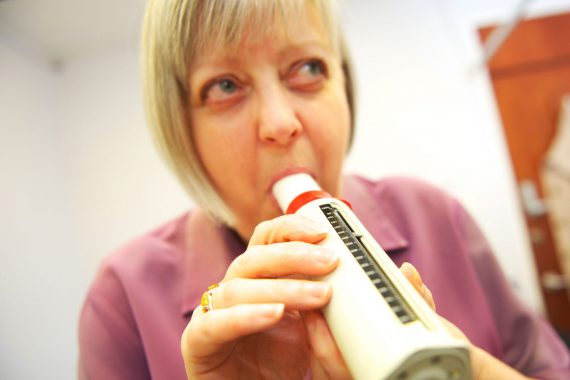How BTS/SIGN and NICE guidelines differ on asthma diagnosis

13 April 2016
BTS/SIGN draft guidelines on management of asthma
- GPs should use the initial structured clinical assessment to estimate the probability of asthma.
- For patients with a high probability, record ‘suspected asthma’ and start a carefully monitored trial of treatment (typically six weeks of inhaled corticosteroids). A good response to treatment, based on symptom questionnaire findings and/or lung function tests – either FEV1 or home serial PEF – is enough to confirm the diagnosis, but GPs must record the basis on which the diagnosis was made.
- Patients with an intermediate probability – either on initial assessment or after a failed trial of treatment – should undergo spirometry and, if positive, reversibility tests and/or a trial of therapy. If they have normal spirometry, they should undergo bronchial challenge tests and/or FeNO measurement.
- For patients in whom the probability of asthma is low, investigate possible alternative diagnoses and/or refer for further asthma tests
NICE: diagnosis and monitoring of asthma – interim guidance
- For all patients over five, GPs should perform objective tests (including spirometry and FeNO) at the time of presentation, or once acute symptoms have been controlled.
- Do not make a formal diagnosis of asthma until objective tests have been done.
- Offer a FeNO test if a diagnosis of asthma is being considered in anyone over 16, or in children over five if they have normal spirometry, or obstructive spirometry but negative bronchodilator reversibility
Pulse July survey
Take our July 2025 survey to potentially win £1.000 worth of tokens

Visit Pulse Reference for details on 140 symptoms, including easily searchable symptoms and categories, offering you a free platform to check symptoms and receive potential diagnoses during consultations.










